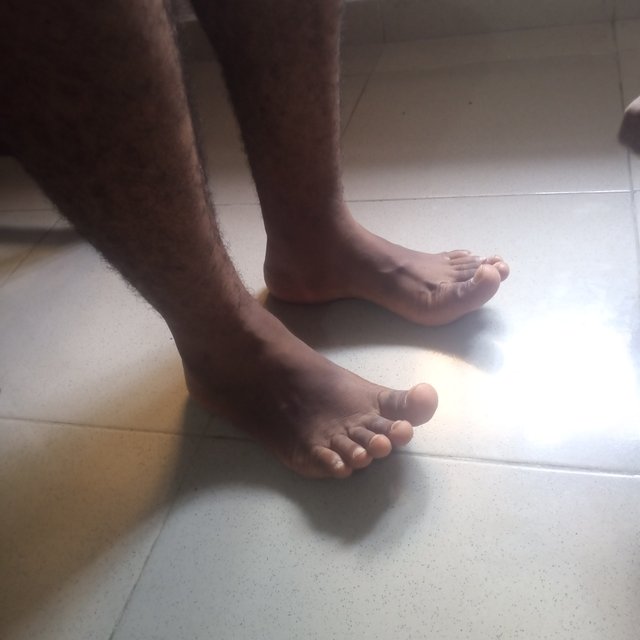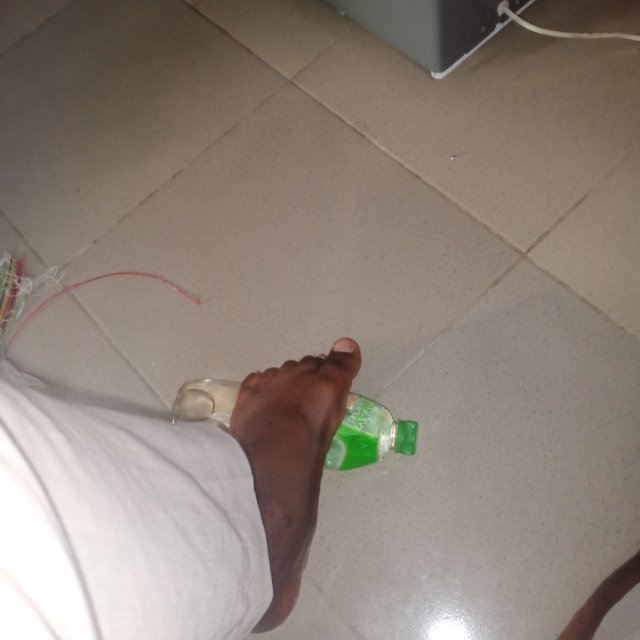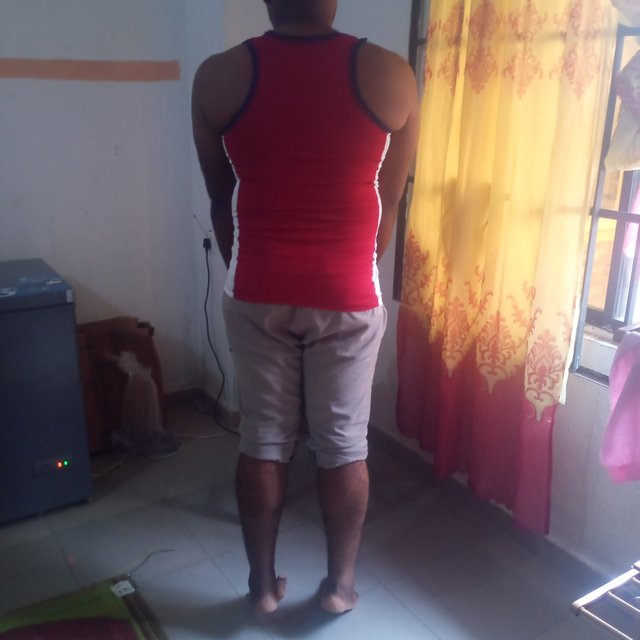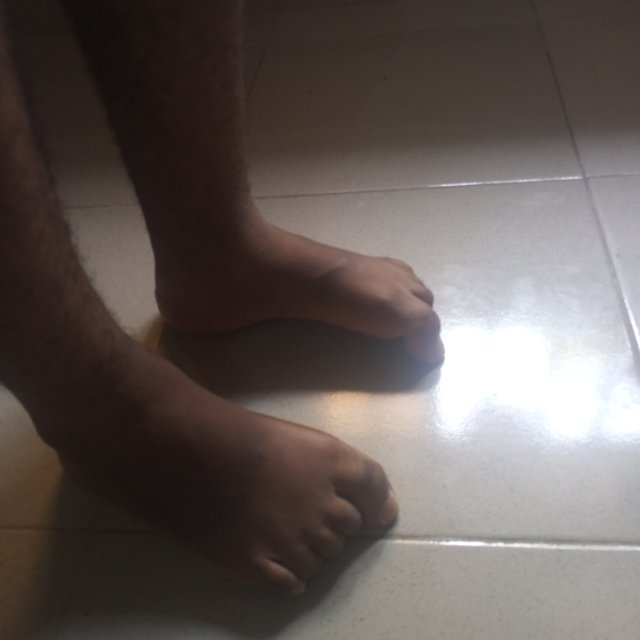Steemit Learning Challenge-S21W5; Plantar Fasciitis"
I am excited to participate in the Steemit Learning Challenge season 21, week 5, which has to do with physical therapy intervention, specifically plantar fasciitis. Thank you, @ashkhan, for the elaborate lectures, and I appreciate you. Let me now move to the homework Tasks

What's Plantar Fasciitis? Write in your own words after getting knowledge from the lesson post.
There is a tissue we humans have along the bottom of our foot, and this band of tissue is known as plantar fascia. At times, we humans unknowingly damage our plantar fascia, a band tissue below our foot, due to the activities we engage in.
When we damage the band of tissue at the bottom of our foot, or damage our plantar fascia, then we are diagnosed with a medical condition known as plantar fasciitis. When our plantar fascia is damaged, our legs may be swollen or inflamed.
Causes
We can have plantar fasciitis if we mount much pressure on our plantar fascia or overuse it.
As humans grow old, their tissue also becomes old, and as we grow old, our plantar fascia may be damaged due to old age wear and tear.
Someone who is obese may easily suffer plantar fasciitis as a result of overweight
Diabetic patients and patients who suffer from arthritis may suffer plantar fasciitis also.
Types
There are two major types of plantar fasciitis that humans may suffer from, and these are based on the duration of the patient suffering it.
(1) Acute: If a patient experiences the bottom part of his foot and it's swollen, then he only suffers this within a month. The type of plantar fasciitis he is suffering is Acute, just within one month. This may be caused by a certain injury
(2) Chronic: When a patient suffers plantar fasciitis for more than one month, then he is diagnosed with chronic plantar fasciitis. This may also be called a classic case.
Treatment: A patient who suffers from plantar fasciitis may be treated with;
(A) Steroid injection: when this injection is given to the patient, it helps stimulate hormones that will facilitate the repair of the tissues, thereby reducing inflammation.
(B)Therapy: A patient with plantar fasciitis may have a therapist massage the affected areas of his foot, or he may engage in specific exercises for plantar fasciitis.
(C) Device Therapy: A patient with plantar fasciitis can use a device(Orthosis) on the affected areas to limit the movement of the damaged tissue.
Notably, women are mostly diagnosed with this ailment because of the activities they engage in, and if someone is diagnosed with plantar fasciitis, he needs to abstain from eating fried food, red meat, etc.
How would you diagnose a plantar fasciitis? Any clinical investigation or assessment tests?
Plantar fasciitis comes with common symptoms, which can help me diagnose someone who suffers from it. These are
- pains on the heels
- stiffness
- pains on the arch of the foot
- then the heel swollen
The aforementioned symptoms can convince me to diagnose someone with plantar fasciitis if he is experiencing the symptoms.
There are clinical assessment tests for diagnosing someone with plantar fasciitis. I can use **ultrasound and MRI( magnetic resonance imaging). The image of soft tissue from ultrasound and MRI would enable me to diagnose someone with plantar fasciitis. These are effective tools.
Try to practice at least 3 exercises that you have learned from the lesson. Share images, gifs, or videos while practicing.
Frozen bottle rolling: I removed a cold bottle of water from my refrigerator and placed the water bottle on the floor. I sat and placed my leg on the frozen water bottle, then I began to roll the bottle for about five minutes. Pictures and a video are attached below;



Heel Raise Exercise: For this exercise, I grabbed the bag of the chair, then balanced and pushed up. While placing my five toes on the floor, I raised my heel and stood that way for about ten seconds. I repeated the process twenty times, and I didn't lean my body forward during the process. The videos and pictures are attached below;
Toe curl Exercise: I sat on my chair and placed my foot flat on the floor. The next thing I did was curl my toes, and I held it that way while breathing for ten seconds, then I extended my toe for ten seconds. I repeated the process ten times. Below are the pictures;


Share your review after performing these exercises either on yourself, a healthy individual, or a patient.
The three exercises I performed can relieve pain and make one feel better again. During the bottle rolling exercise, the tissue at the bottom of my toe was strengthened. **During the heel Raise Exercise, I felt the muscle on my heel straightens like the toe curl Exercise. I can testify the exercises are perfect for plantar fasciitis.
I invite;
@eliany
@blessedbee
@daprado1999
X-shared
https://x.com/iddy_e_okon/status/1862531381059825706
Nice one you did a great job, atleast you feel the relief. I will try out this exercise thanks for sharing wishing you success 👍
Thank you very much
Thank you for understanding the lesson and sharing your assignment; I hope that you will enjoy this week's lesson and try to implement it in your life if you see any such case.
Observations
Task 1 (3/3)
You have shared a great knowledge about plantar fasciitis, it's symptoms, causes, and it's types. I appreciate your effort.
Task 2 (2.7/3)
In the second question, you tell us about how you have to assess a patient by doing physical examination and history taking, performing investigations but you didn't mention specialized tests. It would be better if you add special tests like windlass test, big toe extension, ankle dorsiflexion test and many more. Also we can perform x ray to assess any outgrowth of bone. Great.
Task 3 (3.9/4)
You try the toe curls, bottle rolling and heel raise. You did the calf stretch and bottle rolling correctly. But in heel raise, it would be better to put all your body weight on toes area not on the metatarsophalangeal joints area. Always remember to cold therapy & rest is the best therapy in the treatment of plantar fasciitis. I appreciate your efforts.
Overall you made a great attempt to answer all the questions. I appreciate your efforts. But next time try to avoid the above written suggestions. Keep learning and try to implement your knowledge to the people suffering from plantar fasciitis or any type of heel pain. Thank you.
Thank you very very much for the review. I have taken note of the correction regarding how to perform the heel raise exercise, that my body weight needs to rest on toe areas.
Thanks, I will practice this again. I have taken note of all the areas I need to improve on; thanks once again; I appreciate your Ernest efforts in impacting the knowledge to us.